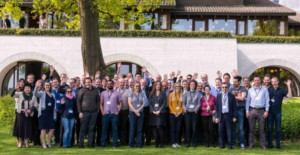LEITAT participates in the caLIBRAte project: nano risk governance
 Currently, none of the existing REACH compliance models are suited or validated for risk assessment of manufactured nanomaterials and many existing exposure limits are not suitable for nanomaterials. CaLIBRAte will change this by developing a “systems-of-systemsâ€Â based on a suite of tested and calibrated nano-specific risk prioritization and control banding tools. Our work will leverage more than a decade of nanosafety research and resources to develop models for next generation nano-risk governance framework.
Currently, none of the existing REACH compliance models are suited or validated for risk assessment of manufactured nanomaterials and many existing exposure limits are not suitable for nanomaterials. CaLIBRAte will change this by developing a “systems-of-systemsâ€Â based on a suite of tested and calibrated nano-specific risk prioritization and control banding tools. Our work will leverage more than a decade of nanosafety research and resources to develop models for next generation nano-risk governance framework.
The key objective of the caLIBRAte project is to funnel the state-of-the-art in nanosafety research and merge it with state-of-the-art risk governance and communication sciences to establish a versatile risk governance framework for assessment and management of human and environmental risks of MN and MN-enabled products. The ultimate goal is that the quality and trust in the nano-specific models in the caLIBRAte risk governance framework will exceed current level of most existing REACH tools.

caLIBRAte project aims to establish a state-of-the-art versatile Risk Governance framework for assessment and management of human and environmental risks of MN and MN-enabled products. The framework will be a web-based “system-of-systems†linking different models and methods for:
- Screening of apparent and perceived risks and trends in nanotechnology,
- Control banding, qualitative and fully integrated predictive quantitative risk assessment operational at different information levels
- Safety-by-design and multi-criteria decision support methods
- Risk surveillance, -management and -guidance documents.
The risk management framework will support assessments of emerging and existing MN and MN-enabled products following the recent ISO31000 risk governance framework, as well as safety in innovation by matching models to the principle innovation steps in the “Cooper Stage- Gate®†product innovation model.
Control banding tools and quantitative models will be subject to sensitivity analysis and performance testing followed by a revision as needed. After revision the models will again be analyzed by sensitivity testing, calibration, performance tested to establish the uncertainties. After calibration, the models will be part of the framework, which will be demonstrated by case studies. Stakeholders will be involved for defining the user requirements of the framework and will receive training in the framework at the end.
The caLIBRAte project proposal answers to the call of NMP30-2015: Next generation tools for risk governance of MNs. The project is specifically designed to address the key challenges defined in the scope of the call text. There is particular focus on model revision, calibration and demonstration of existing models and methods that support the risk governance framework in regards to safe innovation and already implemented nanomaterials. Next generation computational exposure assessment and – toxicology is anticipated in the framework

